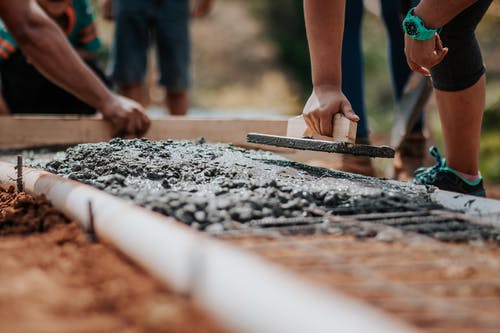structure. While there are many different methods of underpinning, some are better for certain
types of structures. Here are some tips to help you succeed with underpinning. First, identify the
type of foundation that you have. Many foundations are supported on slabs on ground. For more
information on underpinning, please read the following article.
Angle piling is a popular method of underpinning low-grade walls and clay subsoils. This method
is not feasible for houses with a thick strata underneath. Another type of underpinning is the
dead shore method. This involves inserting steel needles in the wall to act as beams. The pile
cap is a concrete needle. This method can be useful for homes or buildings located in areas with
weakly bearing strata, or waterlogged soil. Jack pile underpinning (also known as Jack pile
underpinning) is another popular method that can be used where traditional methods are not
possible.

Underpinning is a great method to stabilize and strengthen a foundation that is unstable. By
extending a new foundation beneath the existing one, underpinning can increase the load-
bearing capacity of the foundation soil. A great way to build a basement under a building is to
use underpinning. This process can also help prevent waterlogging. It will allow you to avoid a
costly structural replacement. It is essential to understand the details surrounding your
foundation when choosing the best method of completing your project.
A general procedure for underpinning involves extending foundation below the top floor. You
must start from the corners and work inwards, avoiding any non-load-bearing walls. Be sure to
start below a strip footing. The strip footing must have a three-by-two-foot dimension. Mixture
should be between 1 and 3. The mixture should be allowed to cure for at least two days before
being loaded onto the structure.
Underpinning is a way to strengthen the foundation of a structure and improve the stability of an
already existing building. Many engineers recommend this method because the foundation can
deteriorate due to water table fluctuations. The soil’s bearing ability is reduced by the changing
levels of the water table. It is also cost-effective. Underpinning is usually as easy as repairing a
chipped or cracked tile.
Subsidence can be a common occurrence. However, many properties do not show any signs. If
the subsidence is causing the foundation to sink, you need to get a structural engineer to inspect
the property and give a report. A structural engineer’s report will highlight any structural
problems, as well as the potential benefits of underpinning. A properly-done underpinning
procedure can prevent subsidence from occurring again, and it can also protect a building’s
integrity in the long term.
The first step in underpinning any building is to remove the existing concrete slab. A concrete
slab can weigh up to five tonnes, and one tonne of dirt could cause a city’s foundation to
collapse. Modern underpinning techniques can solve most foundation problems without affecting
the building’s operations. One method is to use air-flushed percussion augers, which makes the
underpinning process seamless.
